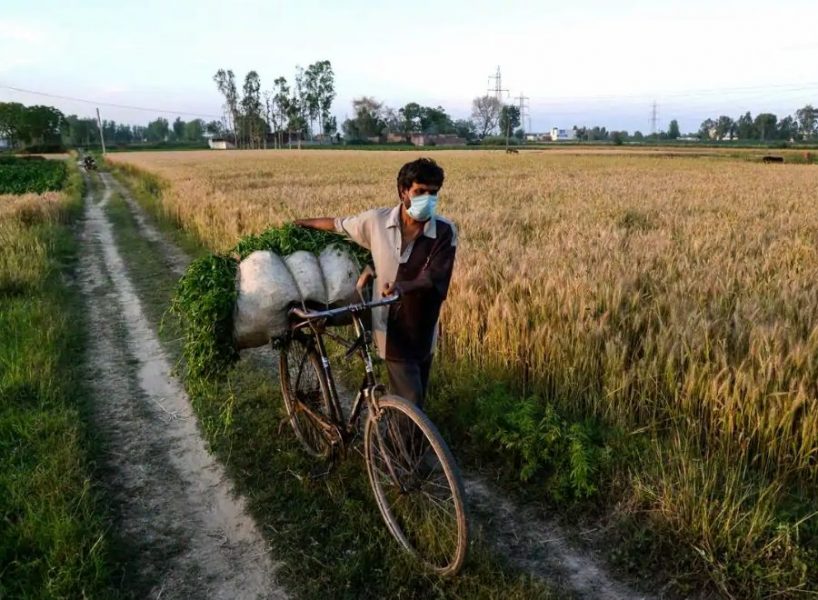
MGNREGS: A good way to transfer benefits amid COVID-19 crisis

When Finance Minister Nirmala Sitharaman announced the reforms under the Atmanirbhar Package, the additional allocation of around ₹40,000 crore to Mahatma Gandhi National Rural Development Guarantee Scheme (MGNREGS) was one its highlights.
The scheme is currently expected to financially assist migrant workers headed towards their hometowns in different states. The state-of-the-art infrastructure for the direct benefit transfer (DBT) is one of the major reasons why the government has resorted to MGNREGS in the time of COVID-19 crisis.
The Federal takes a look at the MGNREGS’s outlay, reach and performance in different states over the last few years.
Economic power to rural India
The Mahatma Gandhi National Rural Employment Guarantee Act (MGNREGA) was envisaged to provide minimum employment to labours in unorganized sectors in rural parts of India by the United Progressive Alliance (UPA) government in 2005.
Since the inception of the MGNREGS, the then Gujarat Chief Minister Narendra Modi had strongly been criticizing it. However, after he became the Prime Minister, his government had constantly been relying on the scheme for the benefit of rural India.
Except for the one year, the government had increased the allocation for the scheme each year. Even the Union Budget allocation has almost doubled in the last five years.
Budget allocation
Currently, with an additional allocation of ₹40,000 crore, the total outlay for MGNREGS has reached almost ₹1,00,000 crore for the current financial year. In the last budget, the government had announced ₹61,000 crore for the scheme.
In 2014-15 the allocation for MGNREGS was ₹37,588 crore, which was increased to ₹43,380 crore in the next fiscal year. It was further increased to ₹57,386 crore in 2016-17. In 2017-18, an outlay of ₹68,107 crore was announced, while it was reduced to ₹58,403 crore in the next fiscal year.
Reach and performance
About 14.17 crore job cards have been issued under MGNREGS across the country. This means that those many people had registered themselves with the government for employment and have their bank accounts linked to these cards. But job cards of only half of them or about 7.5 crore people are active. The rest is expected to be activated in the coming days.
This ready infrastructure for DBT will make the benefit transfer easier than ever before. This state-of-the-art infrastructure is one of the reasons why the government chose to rely on MGNREGS for in the time of crisis and this makes the scheme a boon amid the crisis.
Currently, three states that have witnessed a massive influx of migrants — Bihar, Uttar Pradesh and West Bengal — have the maximum number of job cards too. While 1.8 crore people have MGNREGS job cards in Bihar and Uttar Pradesh, West Bengal has 1.2 crore people with the job cards.
Last year, Bihar had less than one-third or only 53.2 lakh active cards, which will increase after the arrival of migrants. Uttar Pradesh and West Bengal had 45.4 and 65.3 per cent of the total number cards in use.
Besides these three states, Rajasthan too has more than a crore job cardholders. It is followed by Maharashtra (93.7 lakh), Andhra Pradesh (98.9) and Tamil Nadu (84.9).
All the seven northeastern states have the highest number of active job cards which is more than 85 per cent in each state. This means that almost all workers are getting benefitted by the scheme. It is followed by Chhattisgarh (80.5) and Tamil Nadu (80.2), which had a higher rate of active job cards last year.
Interestingly, 16 out of 27 states (data for Himachal Pradesh and Uttarakhand are not available) have used more than 90 per cent of the previous year’s budget outlay. Five top-performing states — Kerala, Nagaland, Meghalaya, Chhattisgarh and Assam — reported having spent more than the outlay by the Centre.
The Finance Minister said this year’s target was to create at least 300 crore labour days under MGNREGS to ensure that every person gets benefitted. In this context, when one individual gets a day of work, it is counted as one labour day.
In 2019-20, MNREGA has reported to have generated 260.6 crore labour days. Since 2016-17, the figures had been more than 230 crore each year. Around 15 per cent of growth is expected in the generation of the labour days for the current year.

